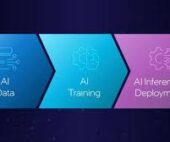You’ve likely seen the headlines proclaiming “Loyalty is dead,” reflecting declining customer and brand loyalty, exacerbated by post-pandemic shifts and uninspiring loyalty programs. As of 2022, active participation in loyalty programs has dropped, indicating a disconnect between consumer expectations and program offerings. The State of Loyalty.
Thank you for reading this post, don't forget to subscribe!The issue lies with outdated and repetitive loyalty programs that fail to evolve with consumer needs. Many programs offer little beyond basic incentives like points or discounts, which no longer suffice in a saturated market where every brand seems to offer a similar scheme.
Modern consumers demand mutual loyalty: personalized interactions, anticipation of needs, and alignment with personal values. To meet these expectations, companies are redefining loyalty success. A significant 82% plan to increase investment in loyalty programs, focusing on deeper connections that foster lasting customer loyalty.
Redefining Loyalty:
Permanence: Brands strive to maintain a permanent position in consumers’ minds, becoming their default choice in a competitive landscape.
Forgiveness: Strong existing trust allows brands to recover from mistakes without losing loyal customers.
Championship: Beyond advocacy, customers champion brands by recommending them to their closest networks, cementing their personal reputation with the brand’s reliability.
Loyalty Model Options:
Four baseline models—Transactional, Experiential, Experience-led, and Perpetual—guide loyalty strategies, each offering unique outcomes based on customer engagement and program design.
Transactional Loyalty: Rewards based on purchases, enhancing customer lifetime value, purchase frequency, and brand preference.
Experiential Loyalty: Emotional connections through personalized experiences, enhancing spending and earned media ROI.
Experience-led Loyalty: Anticipating customer needs through enhanced interactions across the customer journey, fostering efficiency and scalability.
Perpetual Loyalty: Seamless integration into daily life, aligning brand purpose with customer values, and overcoming operational challenges through targeted design and personalization.
Operational Considerations:
Successful loyalty strategies require alignment across vision, investment, and operational capabilities, spanning experience, data, technology, organization, process, and monetization.
Key Recommendations:
- Customer-Centric Approach: Prioritize customer needs and engagement over business objectives.
- Platform Caution: Platforms alone do not drive loyalty; focus on brand, experience, and relevance.
- Realistic Expectations: Loyalty programs take time to mature into revenue centers; plan for operations, data management, and adaptation to market changes.
- Future-Proofing: Continuously optimize strategies with data-driven insights amid evolving consumer behaviors and technological advancements.
- End-to-End Journey: Design loyalty strategies that impact customer attitudes at multiple touchpoints in their journey.
- Validation: Test strategies with end users to ensure alignment with customer expectations before full implementation.
Conclusion:
Building a successful loyalty strategy requires a comprehensive understanding of customer dynamics and a commitment to adaptability. Beyond mere programs or platforms, true loyalty inspires enduring customer actions—commitment, advocacy, and forgiveness—that reflect a brand’s ability to co-create value with its customers. Explore diverse loyalty models to meet these evolving consumer demands and secure lasting brand loyalty in today’s dynamic market.
Content updated March 2024.













